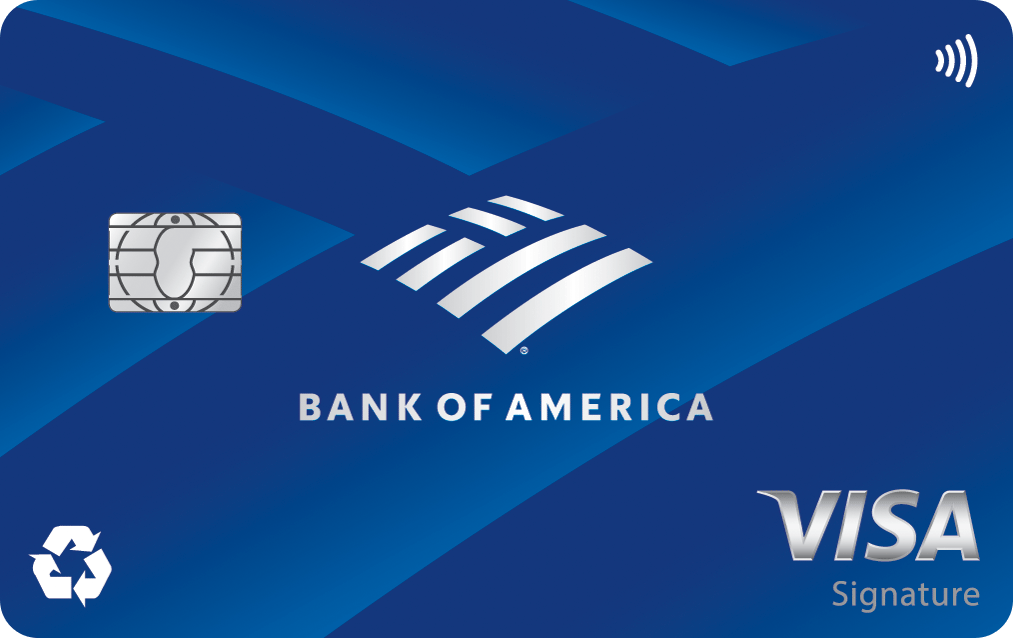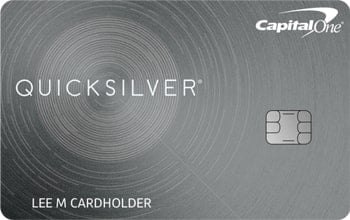Your kid may have already fled the nest to college, but now they’re tackling their next big flight — and this one is abroad. As you get their passport photo just right and find the perfect backpack for their adventure, consider what credit card they should bring as well.
You can help your child to start building credit early, but what better time to challenge them with more responsibility than their first trip abroad? With the right credit card, your child can start building credit responsibly while also enjoying the many travel perks that credit cards can deliver. The card can also serve as a safety net if an emergency arises during their travels.
Here are some questions to ask yourself when selecting a card for your jet-setting student, followed by some recommendations for the best credit cards for students studying abroad.
What will typical card expenses be?
Before you start shopping for your soon-to-be world traveler's credit card, consider what your child will be using the credit card for. Will this be your child’s primary financial resource? Is it just to cover emergency medical expenses or other unexpected costs? Or is it something in between?
Understanding how the card will be used helps to inform the type of travel credit card that’s right for them.
Are credit cards widely accepted at your student’s destination?
People in other countries don’t necessarily use credit cards as often as Americans. When studying abroad in Namibia, for instance, it would be silly to rely solely on a credit card because most businesses require cash.
In other countries, credit card acceptance is widespread, bordering on universal. According to GlobalData, countries like the U.K. and Sweden have moved quickly toward becoming cashless societies, meaning they’re top places where your student could rely nearly exclusively on a credit card.
Research your child’s destination to learn what types of money (cash, credit card, debit card, etc.) are used most in everyday transactions.
Which credit cards are most widely accepted in their destination?
Visa and Mastercard are the most widely accepted credit card networks internationally. A Visa credit card can be used in more than 200 countries worldwide, whereas Mastercard can be used in 210 countries.
American Express is accepted in about 160 markets around the world. That means AmEx could be less convenient for your kid on the go.
Should you add the student to your credit card or get them their own?
Rather than handing your child a credit card that’s fully their own, you could add them to yours as an authorized user.
This decision should depend on a number of factors, including your willingness to add a new line to your account, your child’s credit approval amount (you might not want to send your kid overseas with a credit limit of $200 per month) and how responsible your child has been with money.
Chip-and-PIN or chip-and-signature technology?
Many U.S. credit cards have little metal squares known as EMV chips, named after the companies that developed the technology: Europay, Mastercard and Visa. In the U.S., merchants that accept EMV chip credit cards often require a signature, so chip-and-signature cards are widely used in the United States.
But you may have heard that abroad — and especially in Europe — merchants more commonly take chip-and-PIN cards, which require users to enter a personal identification number after swiping the card.
This used to be a serious problem for anyone using a chip-and-signature card at, for example, an unmanned ticket machine at a train station in Europe. The terminal would demand a PIN to complete the transaction even though the card wasn’t PIN-enabled. This isn’t as big a problem as it used to be. Credit card processing technologies today can usually recognize whether the card uses a PIN, so the terminal in that European train station is less likely to demand a PIN you don’t have.
How will foreign transaction fees and exchange rates impact their spend?
A typical foreign transaction fee is up to 3% of the purchase price per transaction. These can add up quickly if your college student is spending many months abroad or using their credit card as their primary money source.
It’s $30 extra to tack on for every $1,000 spent. On the bright side, many of the best international credit cards for college students traveling or studying abroad charge no foreign transaction fees (more on these later).
Another expense that you should be prepared for is the exchange rate. Exchange rates vary daily per credit card company, and it’s not uncommon for the posted exchange rate to not match your bank statement.
Once you’ve picked a travel card for your student, you can use the credit card company’s online calculator to see how much a purchase in a foreign currency will cost you in U.S. dollars. For example, a €50 transaction today may not cost you the same in USD tomorrow, the next week or next month.
You can access Visa’s currency exchange calculator online as well as Mastercard’s currency converter.
The best credit cards for students studying abroad
Bank of America® Travel Rewards credit card

NerdWallet rating
NerdWallet's ratings are determined by our editorial team. The scoring formula incorporates coverage options, customer experience, customizability, cost and more.
Apply Now
Read Review
The Bank of America® Travel Rewards credit card ups the ante with a flat earnings rate of 1.5 points per dollar spent on all purchases.
Your child can also earn 3 points per dollar spent at the Bank of America® Travel Center, with no limit on the number of bonus points you can earn. Points can be redeemed for a travel credit toward purchases from qualifying merchants or a cash reward.
This card has no foreign transaction fee, a $0 annual fee and to sweeten the deal — your child can get a nice welcome bonus: 25,000 online bonus points after you make at least $1,000 in purchases in the first 90 days of account opening - that can be a $250 statement credit toward travel purchases. That's a nice boost to any new travel gear they’ll need.
Capital One Quicksilver Cash Rewards Credit Card

NerdWallet rating
NerdWallet's ratings are determined by our editorial team. The scoring formula incorporates coverage options, customer experience, customizability, cost and more.
Read Review
If your kid wants to take advantage of credit card welcome offers but isn’t buying any high-ticket items anytime soon, direct them toward the Capital One Quicksilver Cash Rewards Credit Card, which comes with the following offer:
Earn a one-time $200 cash bonus after you spend $500 on purchases within 3 months from account opening.
This card is a solid choice if your child’s credit score is good enough.
Chase Sapphire Preferred® Card
Though the Chase Sapphire Preferred® Card wasn’t created specifically for students, it was created specifically for travelers. Thanks to Chase’s extensive rewards program, your points are eligible for 1:1 transfers to frequent flyer programs like United MileagePlus and Aer Lingus AerClub.
Though there is a $95 annual fee, your child can earn 2x points on travel (including flights, hotels and public transit), 3x points on restaurants; 5x points on qualifying Lyft rides through March 2025; plus 1 point per dollar spent on all other purchases.

NerdWallet rating
NerdWallet's ratings are determined by our editorial team. The scoring formula incorporates coverage options, customer experience, customizability, cost and more.
Apply Now
Read Review
If you’re up for it, you can help your child earn this card’s welcome bonus: Earn 60,000 bonus points after you spend $4,000 on purchases in the first 3 months from account opening. That's $750 toward travel when you redeem through Chase Ultimate Rewards®.
This is a great study abroad credit card if your child is ready to learn the basics of points-based travel and credit card rewards.
Study abroad credit cards, recapped
There is a lot to consider when figuring out which credit cards for students traveling abroad is right for your family. Know why you want one and how your kid will use it, leverage the ways purchases are commonly made where they’re headed and be mindful of how to avoid fees.
Students ready to step directly into the world of travel rewards should look at the Chase Sapphire Preferred® Card.
 Publish for free
Publish for free

























